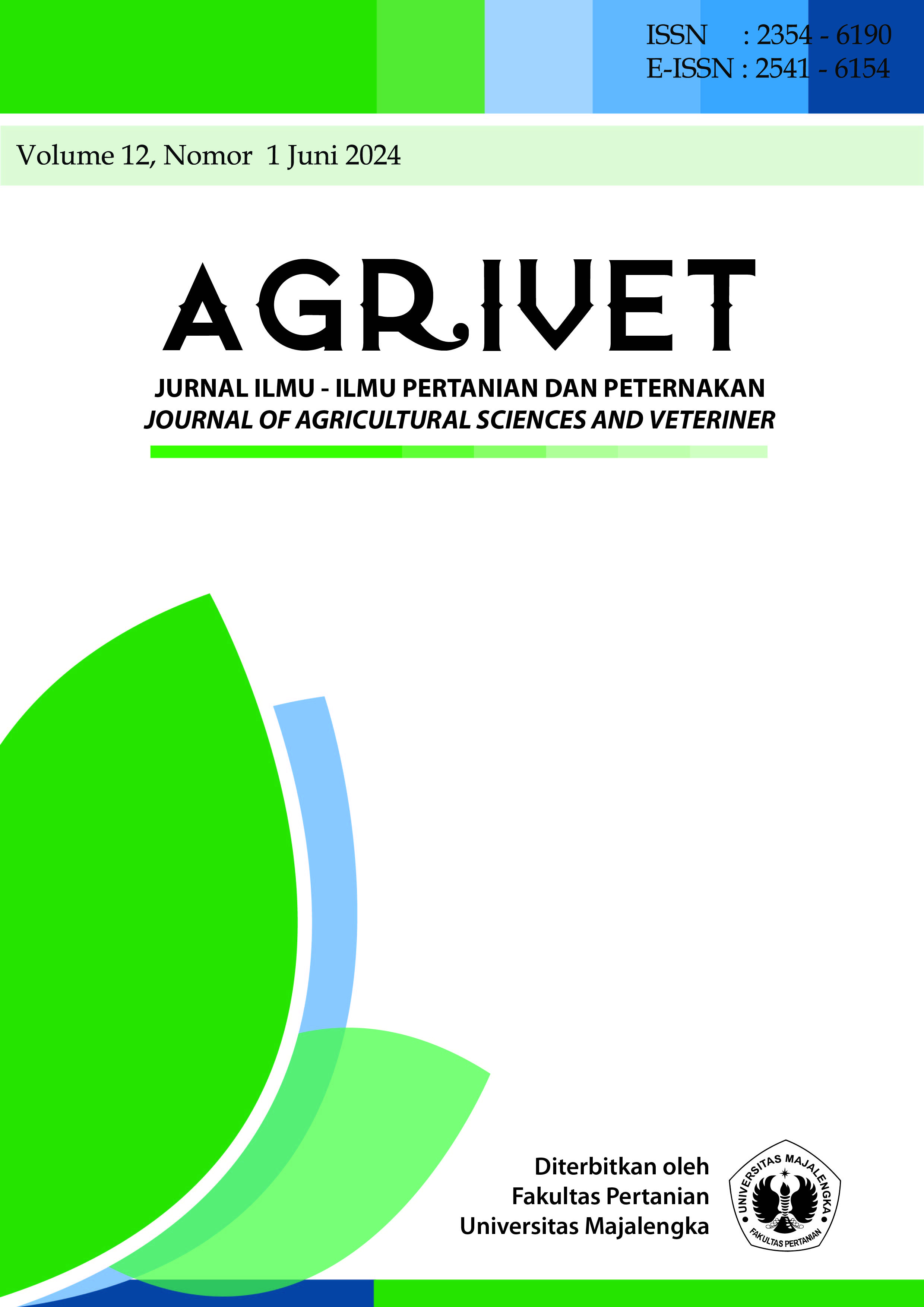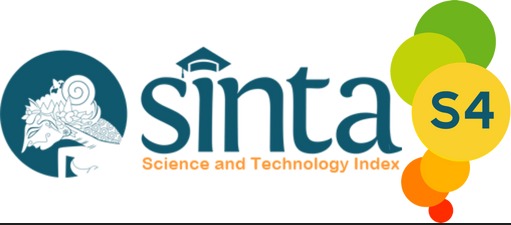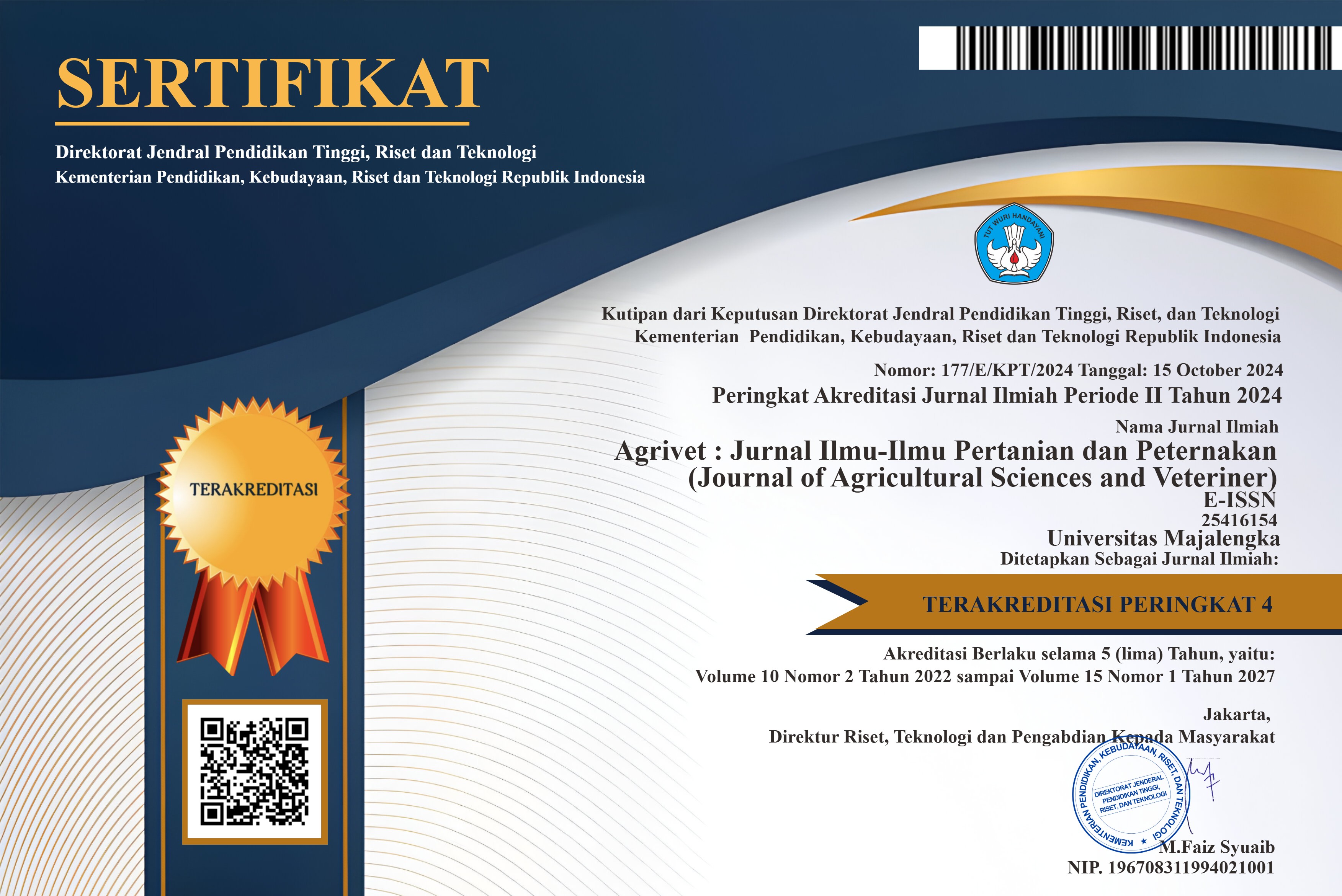Pengaruh pemberian air kotoran ikan dan biourin domba terhadap karakteristik fisiologi tanaman padi (Oryza sativa L.) Varietas inpari 32
DOI:
https://doi.org/10.31949/agrivet.v12i1.9672Abstract
One of the factors that influences plants physiological processes is the absorption of nutrients obtained from both organic and inorganic fertilizers. Some organic fertilizers that can be given are fish waste water and sheep urine fertilizer. The aim of this research is to obtain information regarding the effect of fish waste water and sheep biourine on the physiological characteristics of rice plants (Oryza sativa L.) such as leaf chlorophyll content, Net Assimilation Rate (NAR) and Crop Growth Rate (CGR). This research was conducted on Agricultural Extension Field, Majalaya District, Karawang Regency, from January to April 2022. This experiment used an experimental method with a split plot design (Split Plot Design) with 10 treatment combinations which were repeated 3 times. The main plots are fish waste water (A): A1 (fish waste water), and A2 (ordinary irrigation water). As subplots for Sheep Biourine (P): P0 (Control), P1 (Factory Biourine 100 ml/l), P2 (Sheep Biourine 100 ml/l), P3 (Sheep Biourine 150 ml/l) and P4 (Sheep Biourine 200 ml /l). The research results showed that there was no interaction between biourine fertilizer treatment and fish waste water on the physiology characteristics of the rice plants (Oryza sativa L.).
Keywords:
Physiology Characteristics, Fish Waste Water, Sheep Biourin, Rice PlantDownloads
References
Adrianto, R. (2018). Sikap konsumen terhadap atribut beras organik. Parsimonia-Jurnal Ekonomi Dan Bisnis, 4(3), 321-328.
Akbar, A. (2017). Peran Intensifikasi Mina Padi Dalam Menambah Pendapatan Petani Padi Sawah Digampong Gegarang Kecamatan Jagong Jeget Kabupaten Aceh Tengah. Jurnal Sains Pertanian, 1(2), 210823.
Azizah, K. (2018). Pengaruh Berbagai Waktu Dan Bentuk Aplikasi Pupuk P Pada Pertumbuhan Dan Hasil Tanaman Kedelai (Glycine Max L. Merril) Varietas Anjasmoro (Doctoral dissertation, Universitas Brawijaya).
Haryanto, B. (2009). Inovasi teknologi pakan ternak dalam sistem integrasi tanaman-ternak bebas limbah mendukung upaya peningkatan produksi daging. Pengembangan Inovasi Pertanian, 2(3), 163-176.
Hidayati, S., Nurlina, N., & Purwanti, S. (2021). Uji pertumbuhan dan hasil tanaman sawi dengan pemberian macam pupuk organik dan pupuk nitrogen. Jurnal Pertanian Cemara, 18(2), 81-89.
Jumin, H. B. (1987). Dasar- dasar Agronomi. Rajawali Press, Jakarta
Lakitan, B. (2004). Dasar-Dasar Fisiologi Tumbuhan. Jakarta.
Patti, P. S., Kaya, E., & Silahooy, C. (2013). Analisis status nitrogen tanah dalam kaitannya dengan serapan N oleh tanaman padi sawah di Desa Waimital, Kecamatan Kairatu, Kabupaten Seram Bagian Barat. Agrologia, 2(1), 288809.
Silva, E. D. B., Ferreira, E. A., Pereira, G. A. M., Silva, D. V., & OLIVEIRA, A. J. M. (2017). Peanut plant nutrient absorption and growth. Revista caatinga, 30, 653-661.
Supriadi, S. (2005). Kombinasi pupuk urea dengan pupuk organik pada tanah inceptisol terhadap respon fisiologis rumput hermada (Sorghum bicolor). In Prosiding Seminar Nasional Teknologi Peternakan dan Veteriner, Bogor (pp. 12-13).
Tando, E. (2019).Upaya efisiensi dan peningkatan ketersediaan nitrogen dalam tanah serta serapan nitrogen pada tanaman padi sawah (Oryza sativa L.). Buana Sains, 18(2), 171-180.
Published
How to Cite
Issue
Section
License
Copyright (c) 2024 Winda Rianti, Bagus Dwi Herlianto, M.Ridwan, Rika Yayu Agustini

This work is licensed under a Creative Commons Attribution-ShareAlike 4.0 International License.
An author who publishes in the Jurnal Agrivet agrees to the following terms:
- Author retains the copyright and grants the journal the right of first publication of the work simultaneously licensed under the Creative Commons Attribution-ShareAlike 4.0 License that allows others to share the work with an acknowledgment of the work's authorship and initial publication in this journal
- The author is able to enter into separate, additional contractual arrangements for the non-exclusive distribution of the journal's published version of the work (e.g., post it to an institutional repository or publish it in a book) with the acknowledgment of its initial publication in this journal.
- The author is permitted and encouraged to post his/her work online (e.g., in institutional repositories or on their website) prior to and during the submission process, as it can lead to productive exchanges, as well as earlier and greater citation of the published work












